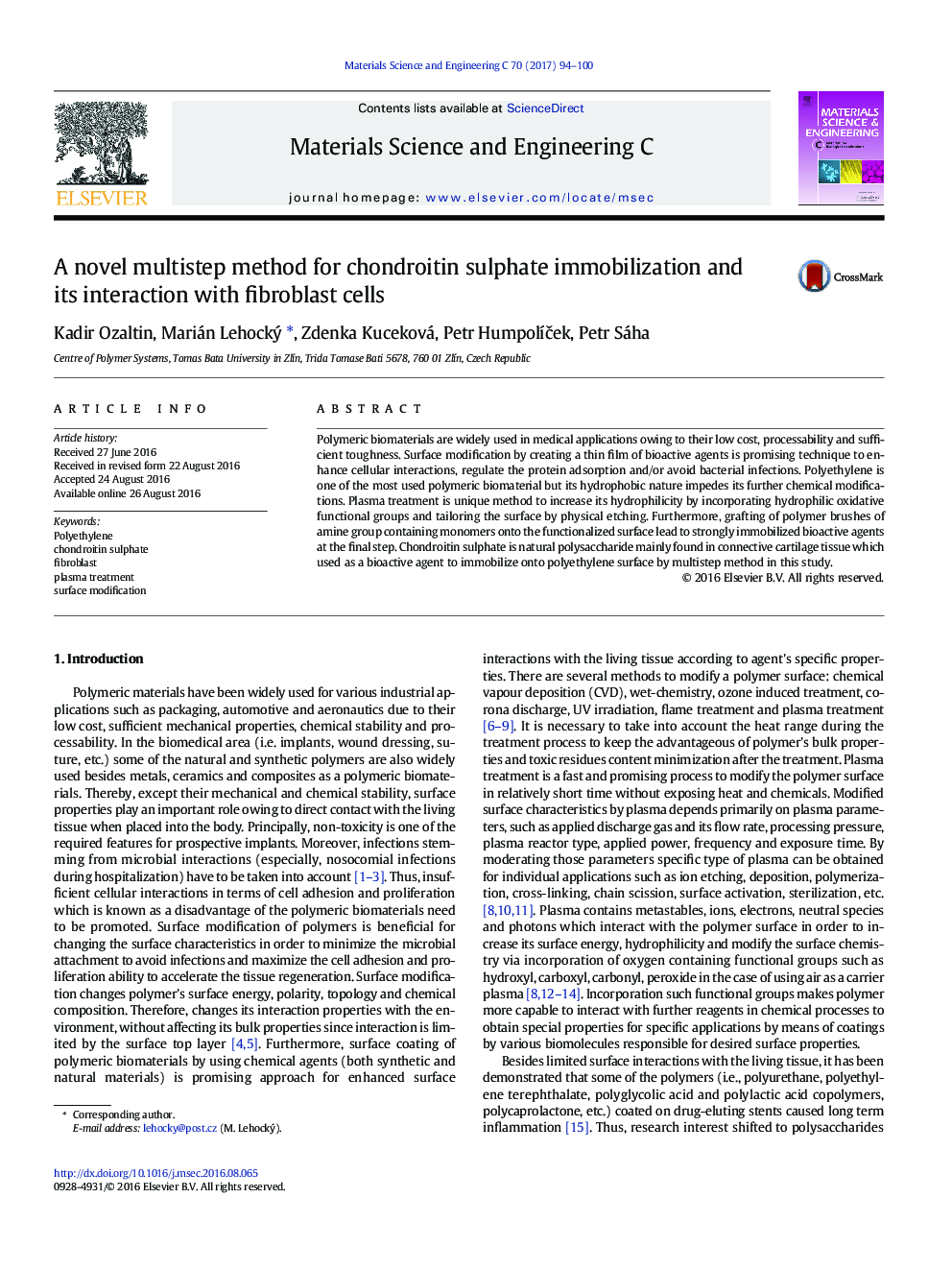| کد مقاله | کد نشریه | سال انتشار | مقاله انگلیسی | نسخه تمام متن |
|---|---|---|---|---|
| 1427811 | 1398100 | 2017 | 7 صفحه PDF | دانلود رایگان |
• Attachment of chondroitin sulfate to polyethylene.
• A robust way to modify surfaces using multistep approach.
• The modified surfaces showed improved proliferation of mouse primary fibroblast cells.
Polymeric biomaterials are widely used in medical applications owing to their low cost, processability and sufficient toughness. Surface modification by creating a thin film of bioactive agents is promising technique to enhance cellular interactions, regulate the protein adsorption and/or avoid bacterial infections. Polyethylene is one of the most used polymeric biomaterial but its hydrophobic nature impedes its further chemical modifications. Plasma treatment is unique method to increase its hydrophilicity by incorporating hydrophilic oxidative functional groups and tailoring the surface by physical etching. Furthermore, grafting of polymer brushes of amine group containing monomers onto the functionalized surface lead to strongly immobilized bioactive agents at the final step. Chondroitin sulphate is natural polysaccharide mainly found in connective cartilage tissue which used as a bioactive agent to immobilize onto polyethylene surface by multistep method in this study.
Journal: Materials Science and Engineering: C - Volume 70, Part 2, 1 January 2017, Pages 94–100
